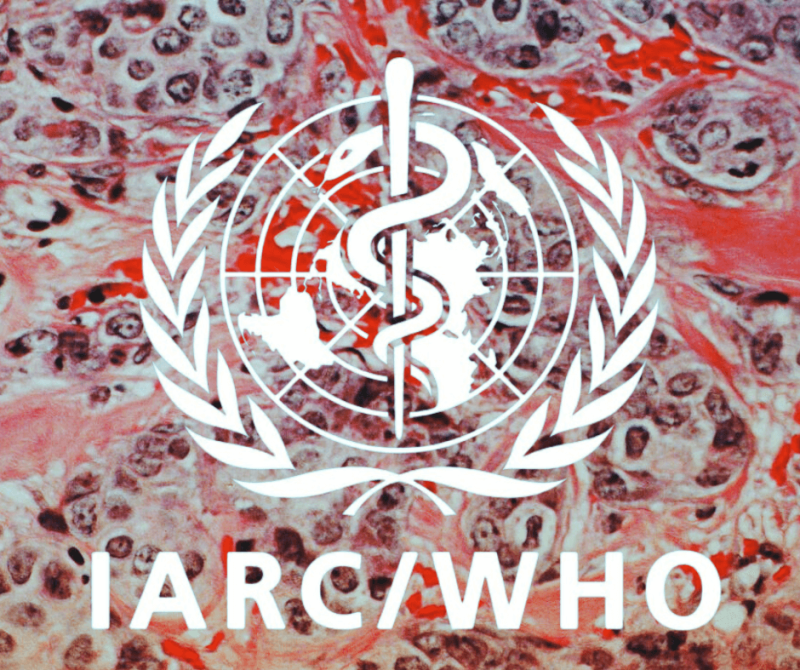
Founded in 1930 by 35 paediatricians to address paediatric healthcare standards, the AAP is the largest professional association of paediatricians in the United States. It provides a variety of services, including advocating for children and paediatrics, research on health systems delivery, public information and education, continuing medical education and analyses and reviews of child health policy issues. The academy is the most recognised and influential organisation in childhood medicine in the States but it is important to acknowledge that not all the views expressed by the AAP are universally held within the broader medical and scientific community. Different health organisations often maintain varying perspectives on contentious issues which stem from diverse interpretations of scientific data, varying risk assessments, or differing priorities when considering public health and safety. For instance, here in the UK the NHS has a very different view on gender affirming care, circumcision and what drugs can and cannot be given to children. Of course, this does not mean that we should disregard the AAP’s valuable contributions. In fact, quite the opposite is true. Which is why many of us, myself included, were taken aback by the significantly flawed and damaging opinion piece, “Use of Genetically Modified Organism (GMO)-Containing Food Products in Children,”
The paper demonstrates poor quality from the outset by incorrectly defining a GMO:
– AAP
A GMO is not limited to an organism resulting from the insertion of novel DNA from a separate organism; rather, it includes organisms with one or more genetic changes made using a narrow range of genetic engineering techniques. The definition focuses on the techniques used, rather than the act of modifying itself, excluding methods like atomic gardening, where plants are irradiated until a beneficial trait mutates. According to the AAP definition, a GMO with a single nucleotide modification from a genetic engineering technique would not be classified as a GMO. This error seems intentional, aiming to evoke “frankenfood” fears and instill reader anxiety, rather than being a mere oversight by the authors.
One particularly concerning aspect of this anti-GMO paper is that it doesn’t actually provide concrete examples of how consuming or coming into contact with GMOs on the market could adversely affect a child’s health. This stance on GM technology is backed up by nearly 300 scientific and technical institutions from every point on the globe, who have issued reports confirming the obvious: there are no material differences between food produced from the 30 or so fruits, vegetables and grains that have been genetically modified. Surprisingly, the AAP paper even acknowledges that there is no evidence suggesting that genetic engineering affects the taste, smell, or appearance of food products, highlighting that consumers typically do not discern differences between GMO and non-GMO foods. Instead of addressing the potential health impacts of GMOs, the article primarily focuses on the pesticides associated with GM crops while perpetuating the misconception that organic farming does not utilise any pesticides. This is deception, plain and simple!
– AAP
Here, the authors seem to be strongly suggesting to the reader that there is a lack of research into the potential negative impacts of the herbicides associated with GMOs. This is simply not true and is beyond misleading. Additionally, they contradict themselves by stating that the reviews quoted did not evaluate the potential hazards arising from the use of Bt endotoxin-producing GMOs, when in reality their use and allergenicity was discussed. The reviews also note that Bt insecticides are widely used in spray form by both organic and conventional farmers.
These endotoxins occur naturally and therefore are permitted for use as pesticides in organic farming. According to the Organic Consumer Association, at least 57% of organic farmers in the US use them. As these insecticides are so widely used they have undergone extensive investigation and are considered to be more selective and safer for humans and non-target organisms than most conventional insecticides, as they target sites found only in specific groups of insects.
Next, the AAP referred to the 2015 International Agency for Research on Cancer’s (IARC) classification of the herbicide glyphosate as a “probable carcinogen”. The IARC, a body within the World Health Organization (WHO), published a monograph stating that there was sufficient evidence in animals that glyphosate was carcinogenic and limited evidence of carcinogenicity in humans.
To be blunt, the IARC’s report misrepresented the science in the limited number of papers they referenced, to the point where one of the authors quoted said the following:
– Keith Solomon
Each and every claim in the document which had a citation can be dismissed, as the authors of the report, deliberately or not, misrepresented the science and in doing so, tarnished the reputation of the WHO. For those who are interested, myself and fellow co-host of The League of Nerds, James, made a video where we discuss the IARC report and show how embarrassingly void it is.
The IARC currently seem to be in the business of publishing a cancer assessment which directly contradicts the global scientific consensus, allowing law firms to leverage threats of class action suits against manufacturers of chemicals caught in the crosshairs and squeeze out billion-dollar settlements or jury verdicts. In my opinion the IARC has devolved into the linchpin of a money-making racket. In the 9 years since the IARC’s publication, numerous regulatory agencies, such as Health Canada, have independently reviewed the IARC decision and found that “glyphosate is not genotoxic and is unlikely to pose a human cancer risk” and “dietary (food and drinking water) exposure associated with the use of glyphosate is not expected to pose a risk of concern to human health”. The European Union regulators have made a decision in 2023, re-registering glyphosate for another decade. This decision was based on an extensive 11,000-page evaluation. Surprisingly, the AAP article does not mention any of these findings and instead reinforces and expands upon the IARC’s controversial conclusion.
The AAP article appears to focus exclusively on glyphosate and here draws a conclusion that contradicts the IARC report, which serves as the cornerstone of their argument. The IARC’s own summary statement indicates that there is no known link between trace dietary glyphosate exposure and cancer.
The AAP article further compounds its deception by not only selectively choosing research to support its predetermined conclusion, but also by misrepresenting and grossly exaggerating the referenced data.
– AAP
The primary objective of the study was to investigate the impact of prenatal exposure to glyphosate by analyzing the presence of the compound and one of its metabolites in the urine of pregnant women in Puerto Rico. The authors wanted to determine whether there a relationship exists between the concentration of these substances and the occurrence of preterm birth. They reported a higher increased odds of preterm birth with higher alleged exposure to glyphosate at the 26-week mark, however it’s important to note that the study had major constraints. The authors to their credit openly acknowledge these limitations, with a significant caveat being that there are multiple sources of the compounds under examination.
The authors acknowledged that the correlation was only observed at the 26-week mark. They also recognised the ambiguity surrounding this finding, questioning whether it indicated a potential increased susceptibility to glyphosate later in pregnancy, or if it was simply a result of the larger sample size. The paper concluded by emphasising the need for further research to clarify these uncertainties.
The decision of the AAP to reference this research paper raises concerns due to its limitations and could be seen as deceptive, especially given the potential implications for public health. It is clear that its inclusion in the AAP article is to fuel pre-existing concerns regarding glyphosate found in urine published in other questionable studies. However, the presence of glyphosate and its metabolites in urine is not inherently a negative finding. The fact that the human body excretes these compounds and does not accumulate them should be seen as a positive. Furthermore, it is crucial for individuals to realise that the concentrations of these compounds detected in urine are exceedingly small. The saying “the dose makes the poison” is particularly relevant in this context, as it underscores the principle that toxicity is dependent on the dosage received. Therefore, the mere presence of these compounds in trace amounts does not necessarily indicate harm, and it is essential for people to grasp the significance of dosage in determining toxicity.
The glaring shortcoming of this scientific article lies in its exclusive focus on herbicides used in conjunction with GMOs while completely omitting any discussion of herbicides associated with organic farming. Compounds used in organic farming, such as chlorine dioxide, copper sulphate, lime sulphur, potassium hypochlorite, and ferric phosphate, often possess higher toxicity, reduced biodegradability and an increased tendency to bioaccumulate. Additionally, organic farming may require larger quantities of these compounds for effective application, a fact that is conveniently left unmentioned. It’s important to emphasise that I’m not suggesting organic pesticides are inherently harmful when used correctly; rather, I am highlighting the hypocrisy evident in the AAP’s selective focus. As an agency primarily concerned with the health and wellbeing of children and young adults, the AAP’s disregard for addressing the potential risks associated with organic farming practices is deeply troubling.
Organic farming, often championed as a healthier and environmentally friendly alternative, is in reality a marketing strategy that capitalises on and perpetuates the fears and misconceptions of its consumers, to charge a premium for products that are no different than their conventional counterparts. This trend has tangible consequences. While listening to a podcast discussing this paper, I heard a distressing story about a doctor dealing with a child who was failing to thrive because the parents insisted on feeding the child organic food, which they could not afford. Consequently, they ended up feeding their child less, highlighting the real-world impact of these deceptive narratives.
The AAP is perpetuating fear and misinformation among the very people it exists to protect. When influential organisations neglect to provide a comprehensive and balanced view of scientific findings, they inadvertently impede the informed decision making of individuals, thus hindering the advancement of knowledge and the betterment of society.
I hope they see the errors of their way and post a retraction soon.
Myles Power is a chemist from the North East of England, who loves to make videos trying to counter pseudoscience and debunk quackery in all of its various forms. Find Myles on X @powerm1985
A version of this article was originally posted at Myles Power’s blog and is reposted here with permission. Any reposting should credit both the GLP and original article.































